Basic QC Practices
2025 Great Global QC Survey Results: Middle East
In 2025, the Westgard Great Global Survey assessed the state of QC practices. What's happening in the Middle-East? All the money spent developing the healthcare system, is it developing better QC, too?
The 2025 Global QC Survey Results: The Middle East
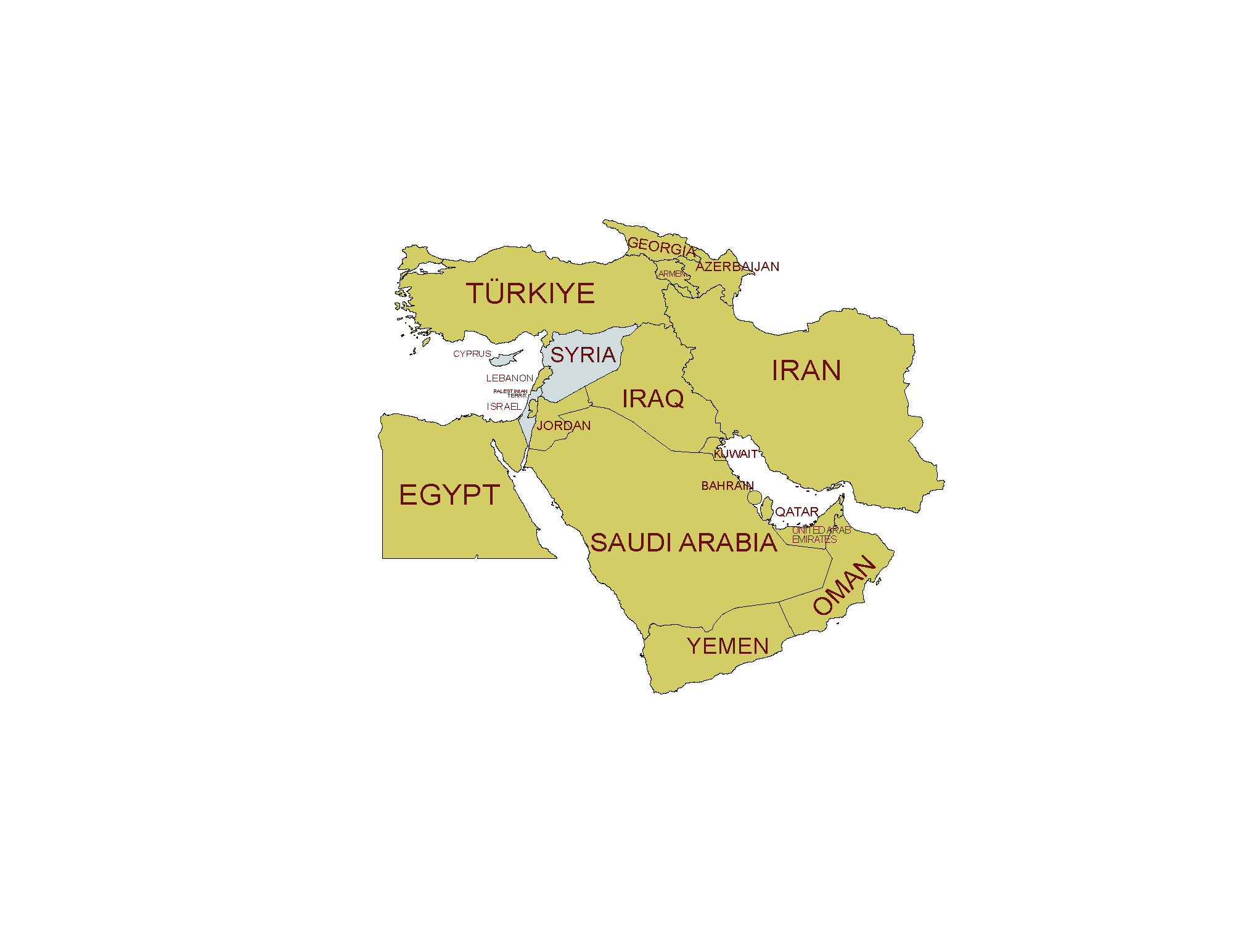
Sten Westgard, MS
September 2025
[This survey was completed with the support and partnership of Thermo Fisher MAS controls.]
In 2025, have QC practices around the world improved or declined?
We surveyed laboratories in 2017 and 2021 about their quality control practices. We did it again in 2025.
We got over 1,280 responses, which break down as follows:
- Africa 118 responses
- Asia 289 responses (note that we include everywhere from India to Australia within this group)
- Europe 143 responses
- Latin and South America 114 responses
- Middle-east 146 responses
- United States and Puerto Rico 440 responses
Asia: 2025 Great Global QC Survey Results: Asia Breakout - Westgard QC
Europe: The 2025 Great Global QC Survey: Europe in isolation - Westgard QC
Middle-East: 2025 Great Global QC Survey Results: Middle East - Westgard QC
Latin and South America: 2025 Great Global QC Survey Results: South and Latin America - Westgard QC
Africa: 2025 Great Global QC Survey Results: Africa - Westgard QC
USA: https://westgard.com/qc-applications/basic-qc-practices/2025-qc-survey-usa.html
All of it together: https://westgard.com/qc-applications/basic-qc-practices/2025-global-qc-survey.html
Countries like Saudi Arabia and United Arab Emirates are pouring money into their healthcare systems, spurring rapid developments. How does that impact QC?
The demographics of the Middle East participants
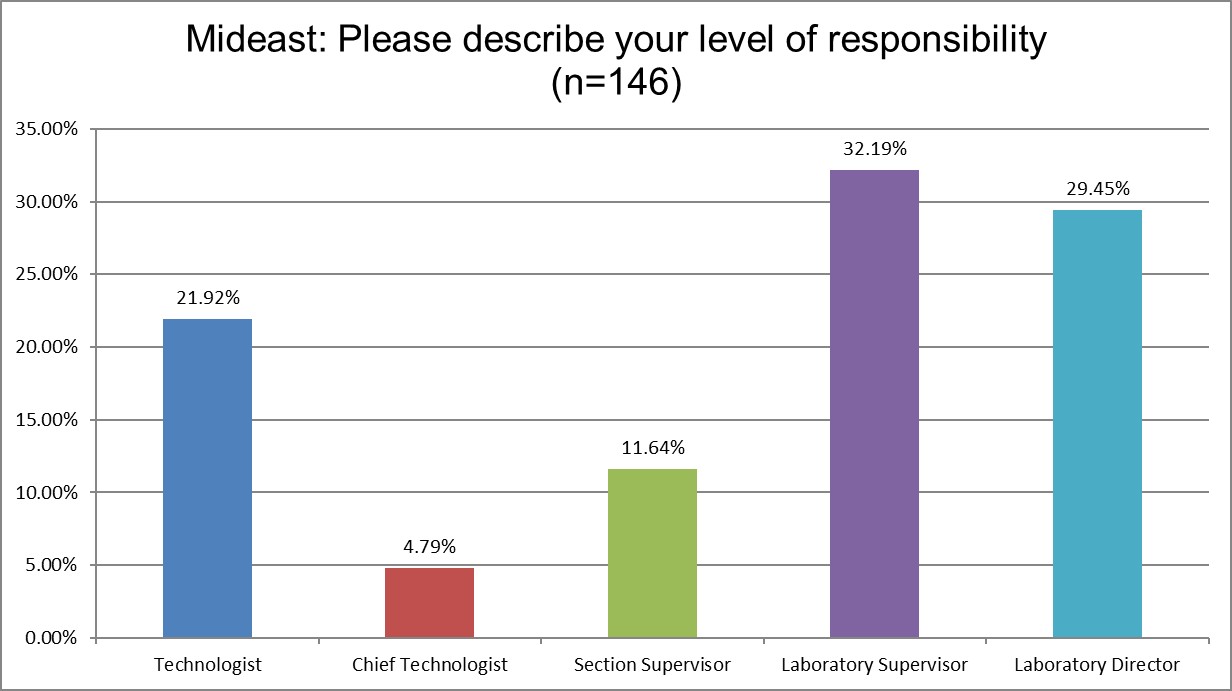
A majority of the responses came from supervisors and directors.
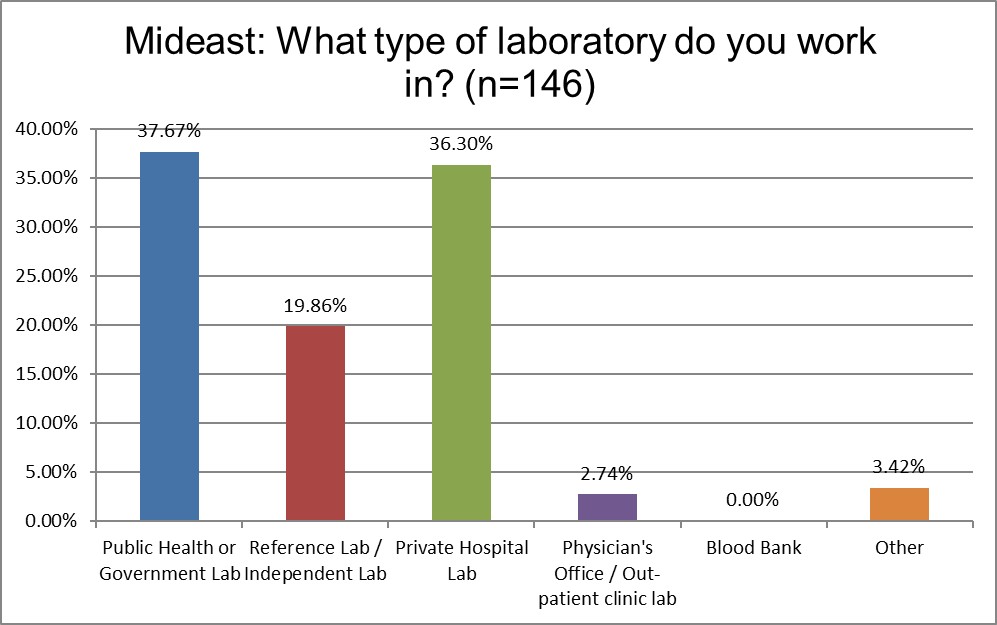
In 2021, 38% of the respondents were from public labs, 25% from reference labs, and only 30% were from private labs. The 2025 survey has fewer reference labs and more private labs.
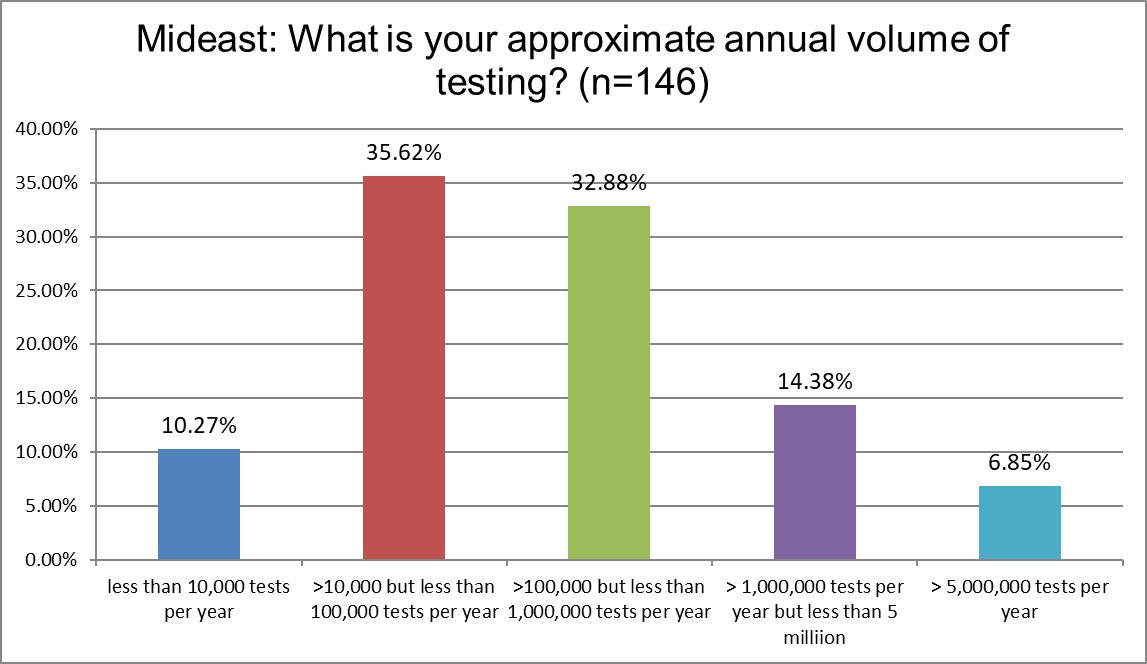
Our 2025 Middle East respondents have a pretty different background than the 2021 cohort. In 2021, 44% of the responses came from labs with >10,000 but less than 100,000 tests/year. Now that's 35%. In 2021, 20% of the responses came from labs with >100,000 but less than 1,000,000 tests/year. Now that's 32% in 2025. In 2021, we had 19% of responses from labs with 1MM to 5MM tests/year. Now that's 14% in 2025. In 2021, nearly 10% of the responses came from mega-labs of >5MM tests/year. That's down to 6.8% in 2025.
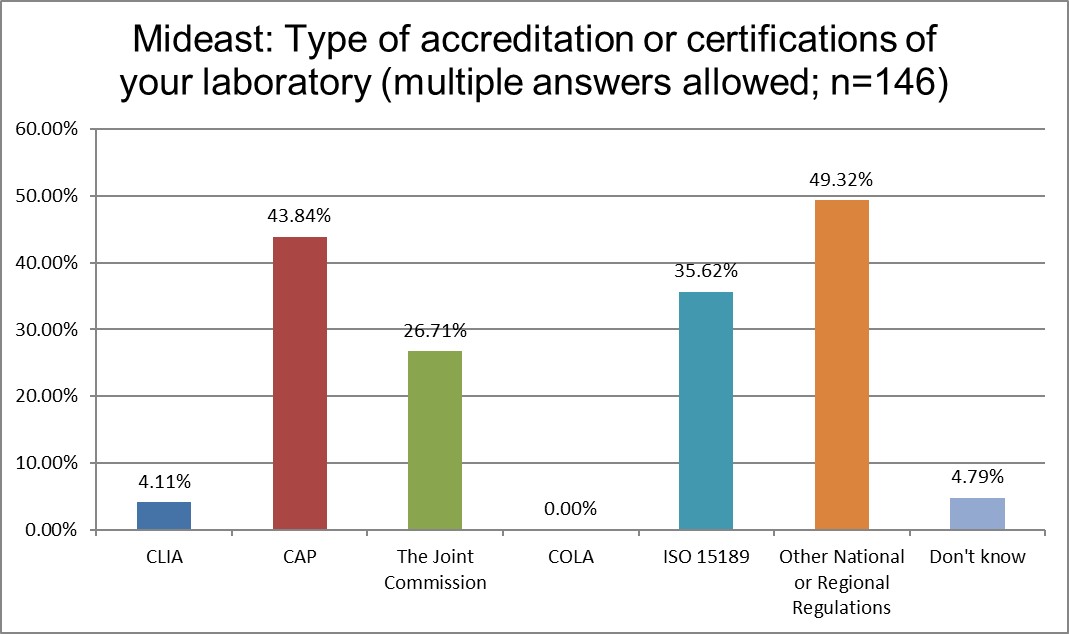
The Middle East has a unique attraction to the international accreditations like CAP and TJC. In 2021, over 50% of labs responding had CAP accreditation and 19% had TJC. In 2025, CAP only has a little over 43% while TJC has risen to 26%. The US regulations have a huge impact here. ISO 15189, in contrast, is showing a decline in influence. 38% of labs were accredited in 2021. In 2025, that's down to 35%. Perhaps that is so small as to be essentially the same, but it's the one region of the world where we haven't seen an increase of ISO influence. Local regulations have also risen in prominence, with over 49% of labs citing them in 2025, up from 42% in 2021.
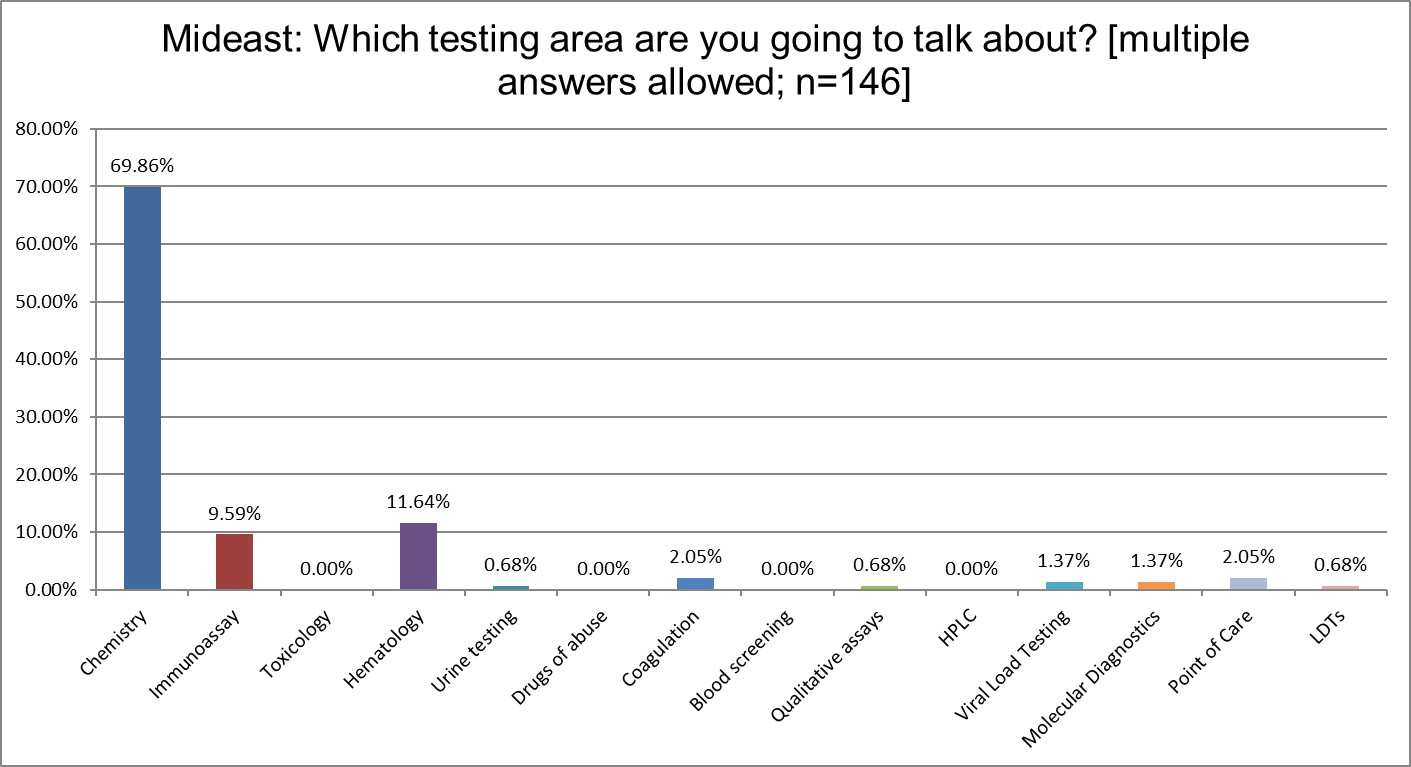
The majority of the survey reponses focus on chemistry testing, decreasing from over 72% in 2021. A little more diversity in the responses for 2025.
The QC Set Up
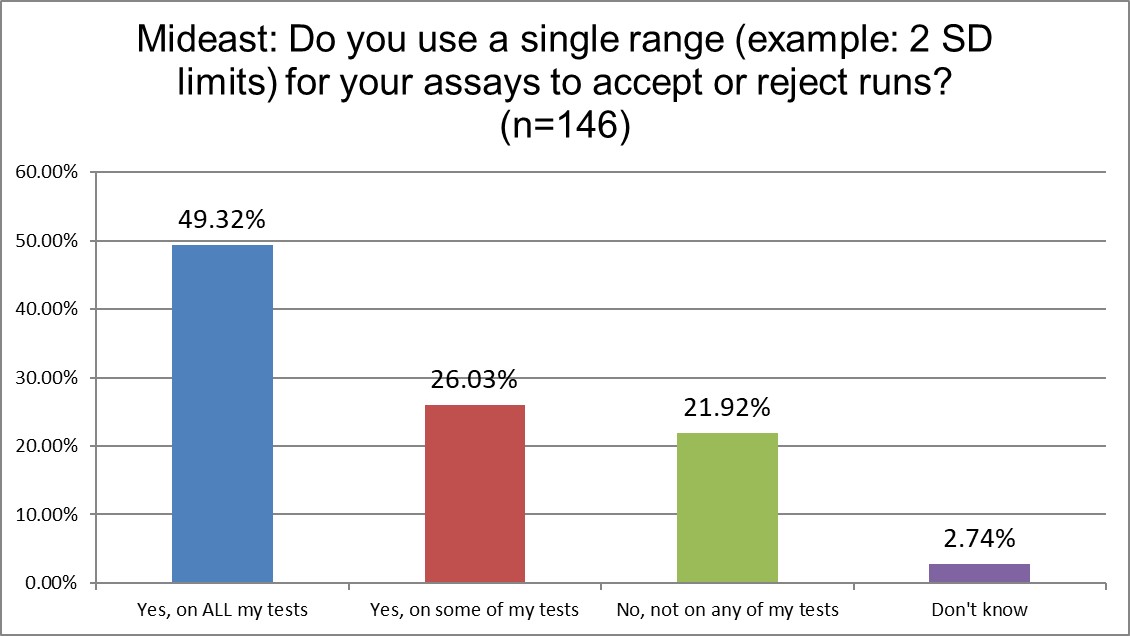
The use of 2 SD on all testing has significantly declined in the Middle East. In 2021, 65% of labs reported using 2 SD on all their tests. Now that's down to just under 50%. The use of 2 SD on some tests has gone up from 21.7 in 2021 to 26.7% in 2025, so 2 SD hasn't been abolished for good. However, the number of labs that use no 2 SD ranges has doubled, from just over 10% in 2021 to nearly 22% in 2025.
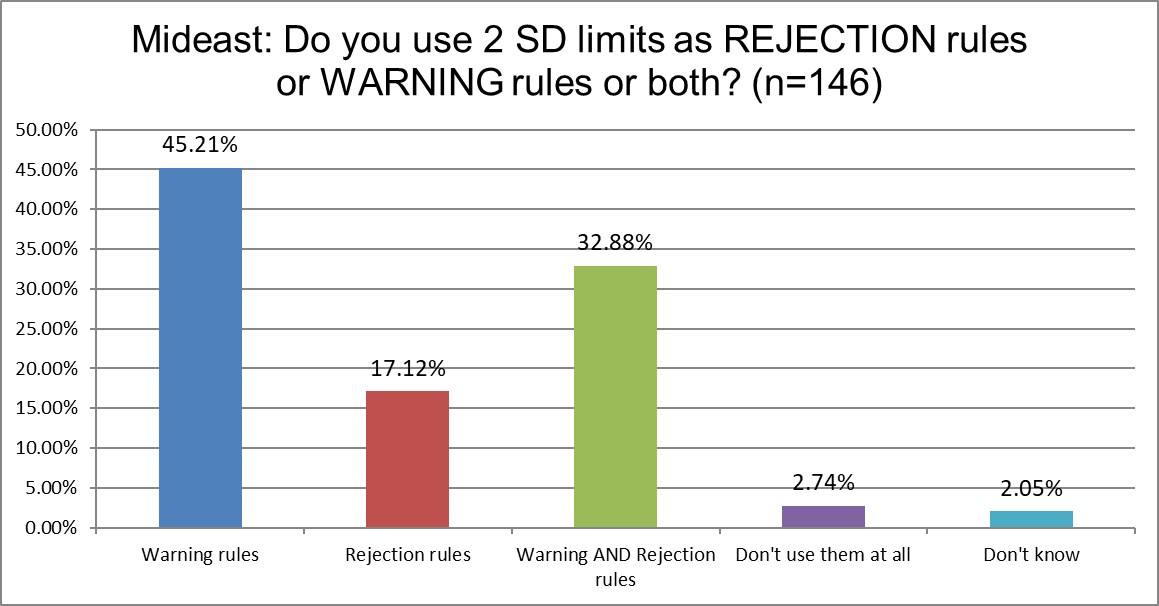
This is a new question we asked for the 2025 survey, so we don't have a prior result to compare it to. Exactly 50% of labs in the Middle East use 2 SD for rejection rules or rejection and warning rules in 2025. Again, a bad habit from the 1st world not being replicated here. But 45% of labs that use them for warning rules only is a good finding.
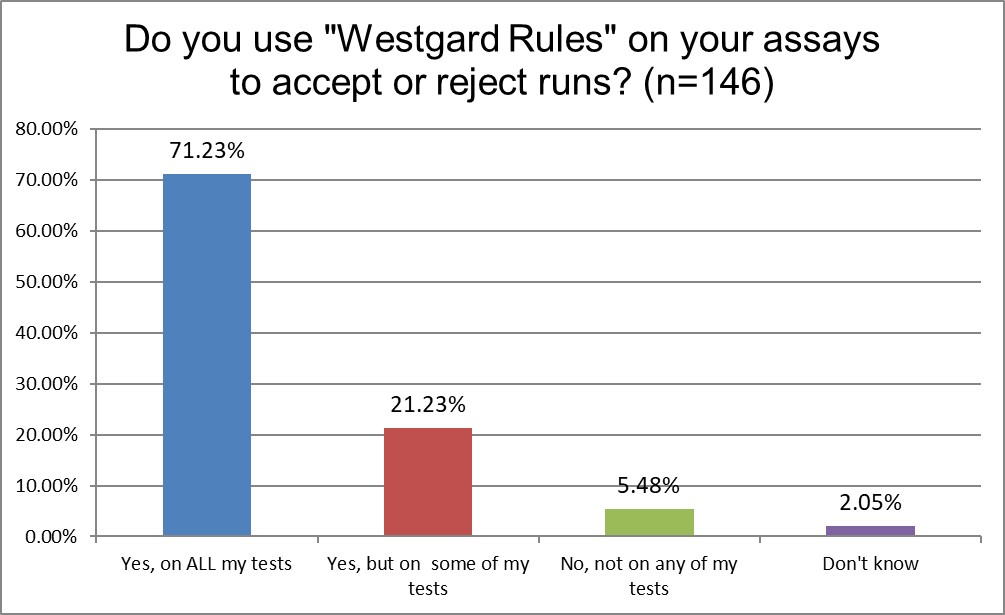
"Westgard Rules" are in use in over 92% of Middle-Eastern laboratories. This is almost the same as 2021, when it was just over 93%. There are more labs using Westgard Rules on some tests but not all. Considering most labs have tests that don't need Westgard Rules at all, this represents a maturing utility of the rules.
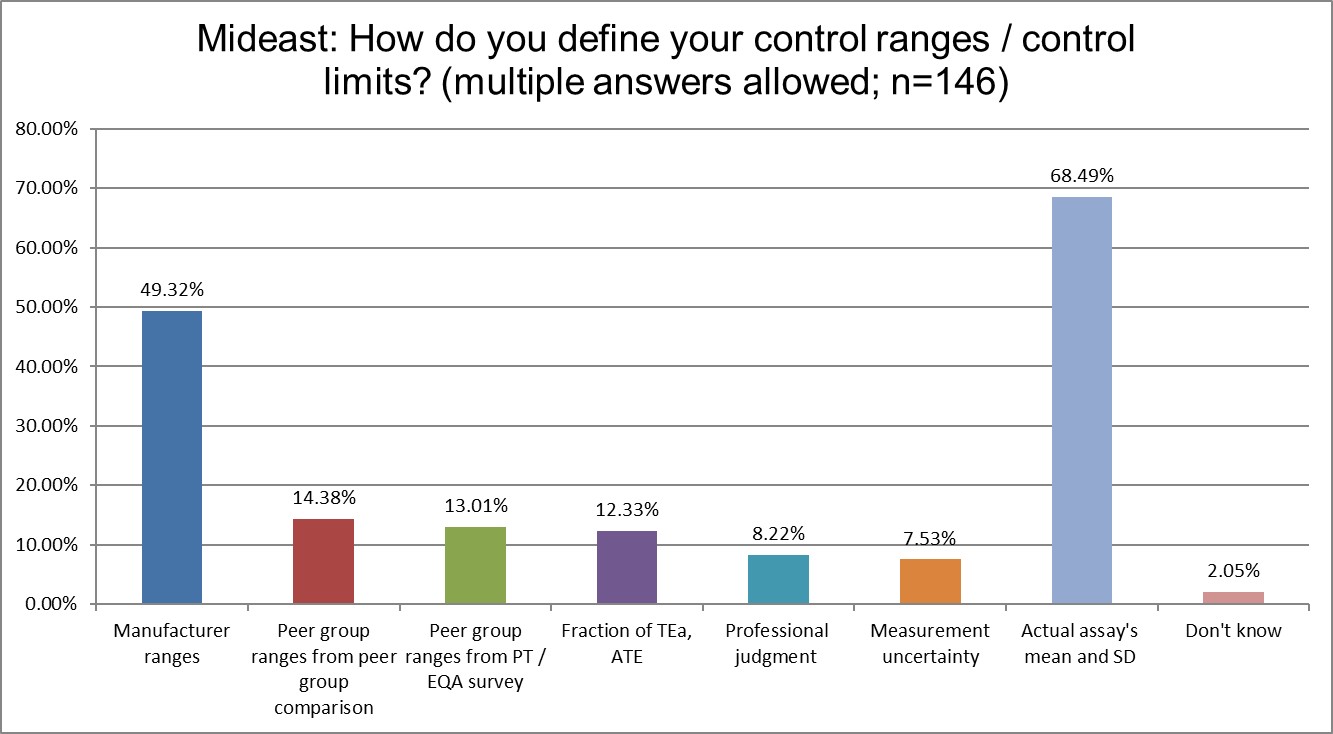
Labs in the Middle East calculate their own range and SD at a rate of 68%, higher than the 2021 rate of 54%, a significant increase in best practice. This increase has also been matched by another welcome development, a reduction in the use of manufacturer ranges, from 63% in 2021 down to 49% in 2025. Everything else is much the same as it was in 2021.
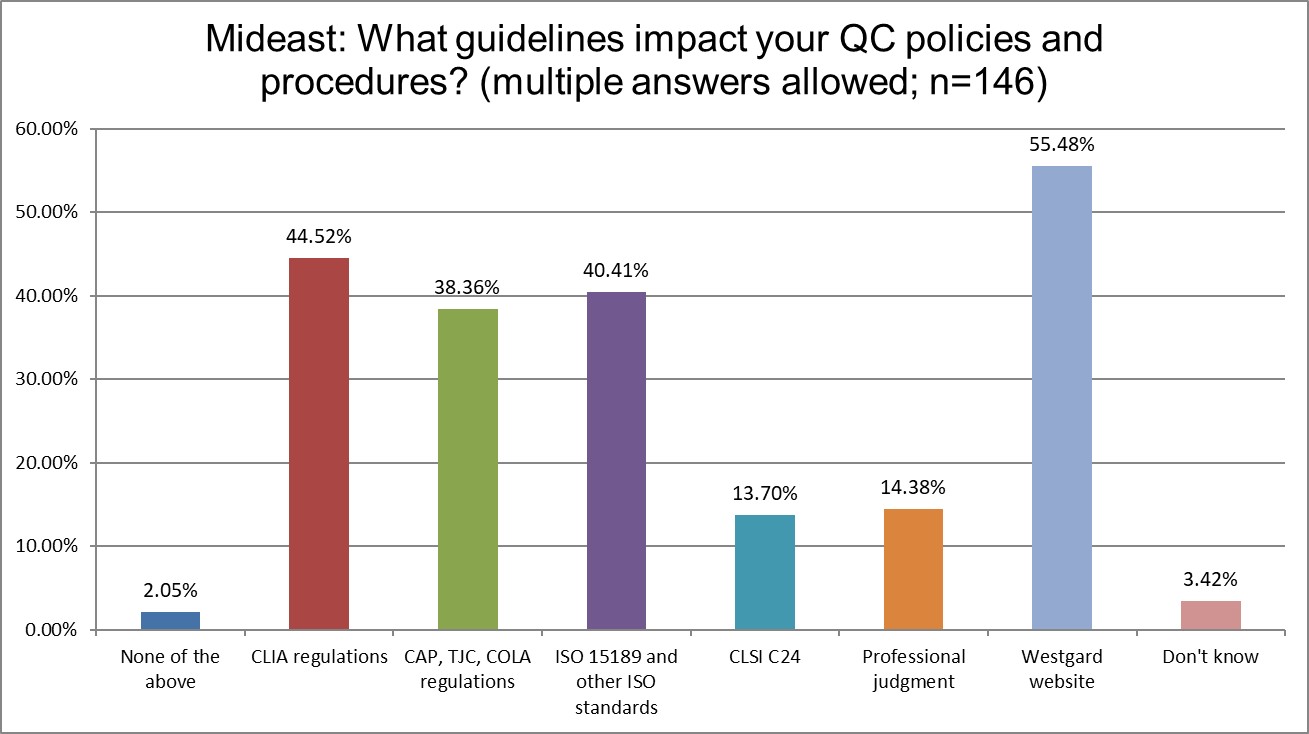
ISO 15189 has a growing influence on how QC is done, from 50% in 2021 to nearly 59% in 2025. The most specific advice on QC, CLSI C24, has remained modestly popular, from 19.6% in 2021 to 17.5% in 2025.
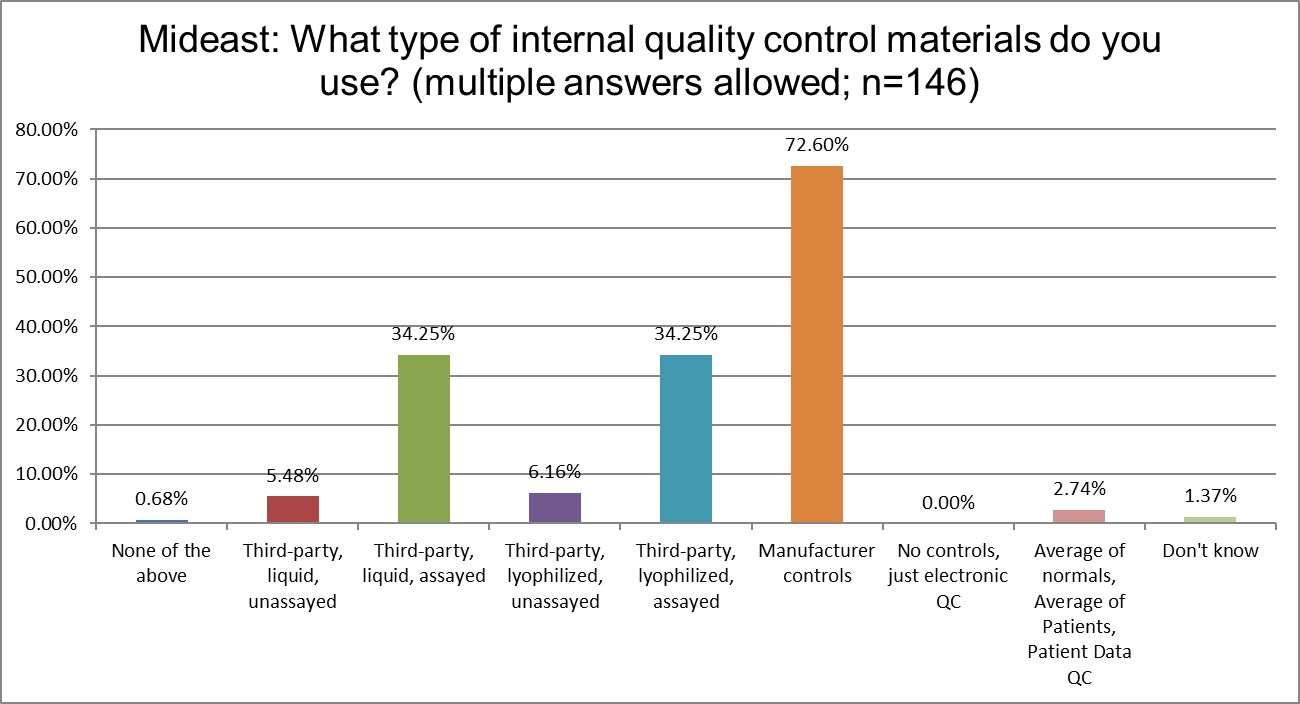
This is one of the few areas in the world where the use of manufacturer controls has increased rather than decreased. In 2021, 63% of labs used manufacturer controls. In 2025, it's now over 72%. Meanwhile, the use of 3rd party liquid assayed controls decreased from 39% to 34%. The use of 3rd party lyophilized assayed controls increased from 23% in 2021 to 34% in 2025. Similar to declines around the world, the use of patient data QC has gone from small to miniscule, from 6.5% in 2021 down to 2.7% in 2025. The Middle East are unique in their use of controls, bucking the trends seen elsewhere.
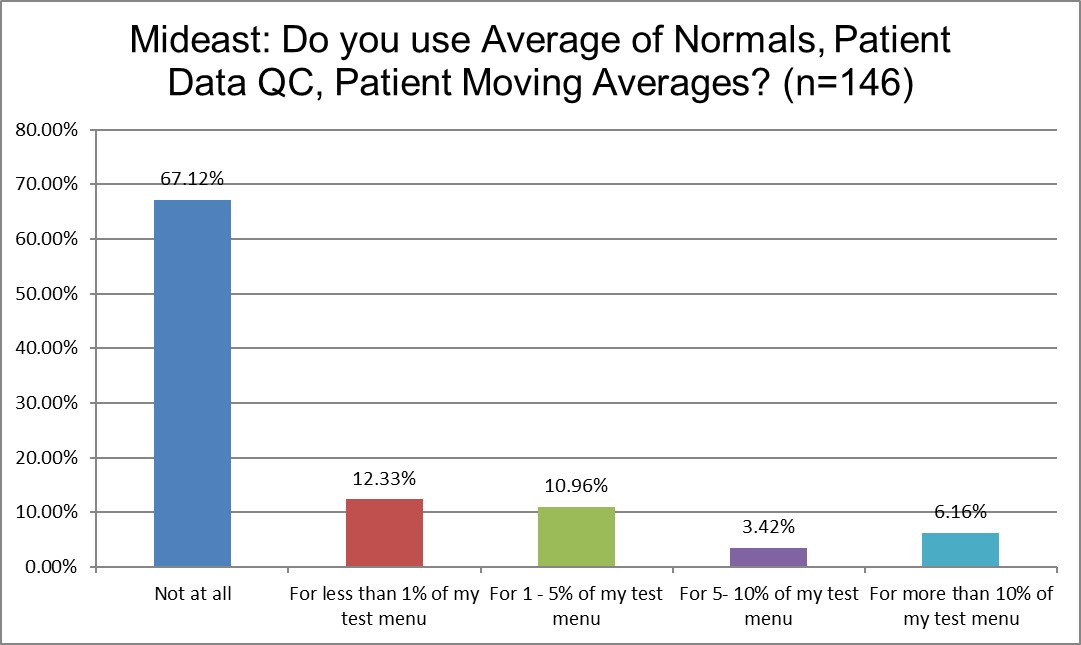
More labs have nothing to do with patient data QC. The percentage of labs not using patient data QC has increased from 63% in 2021 to 67% in 2025. In 2021, almost 33% of labs said they used patient data QC for a significant part of their menu. In 2025, that's dramatically dropped to just 6%. As in most parts of the world, patient data techniques are being used on only a tiny minority of tests.
The Real Practice of Running Controls
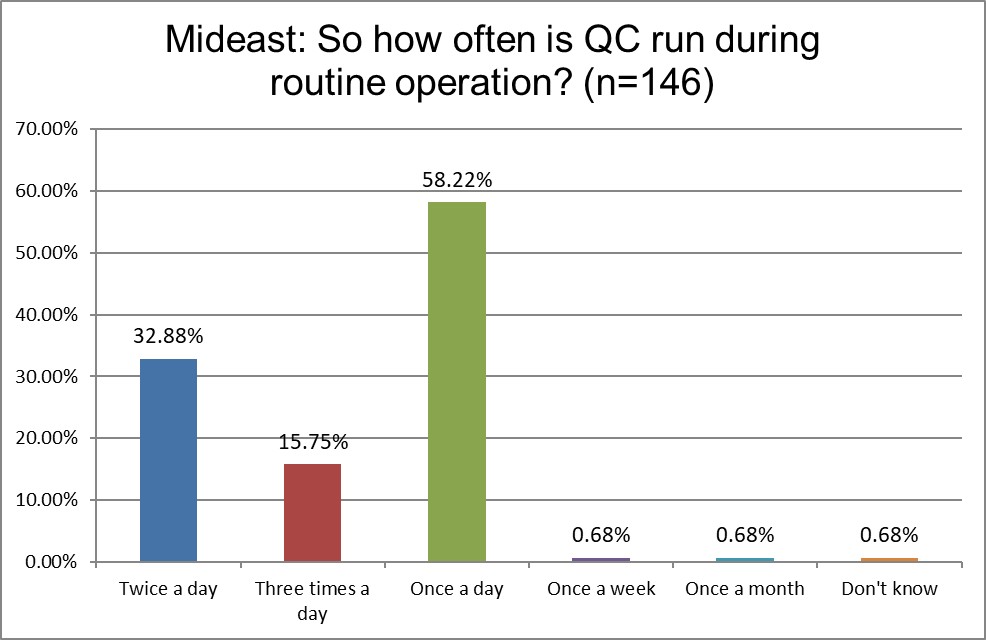
Running three times a day QC significantly increased from 6.5% in 2021 to over 15% in 2025. Running QC once a day increased from 52% up to 58%. Running QC 2x a day decreased from 36% in 2021 to 32% in 2025.
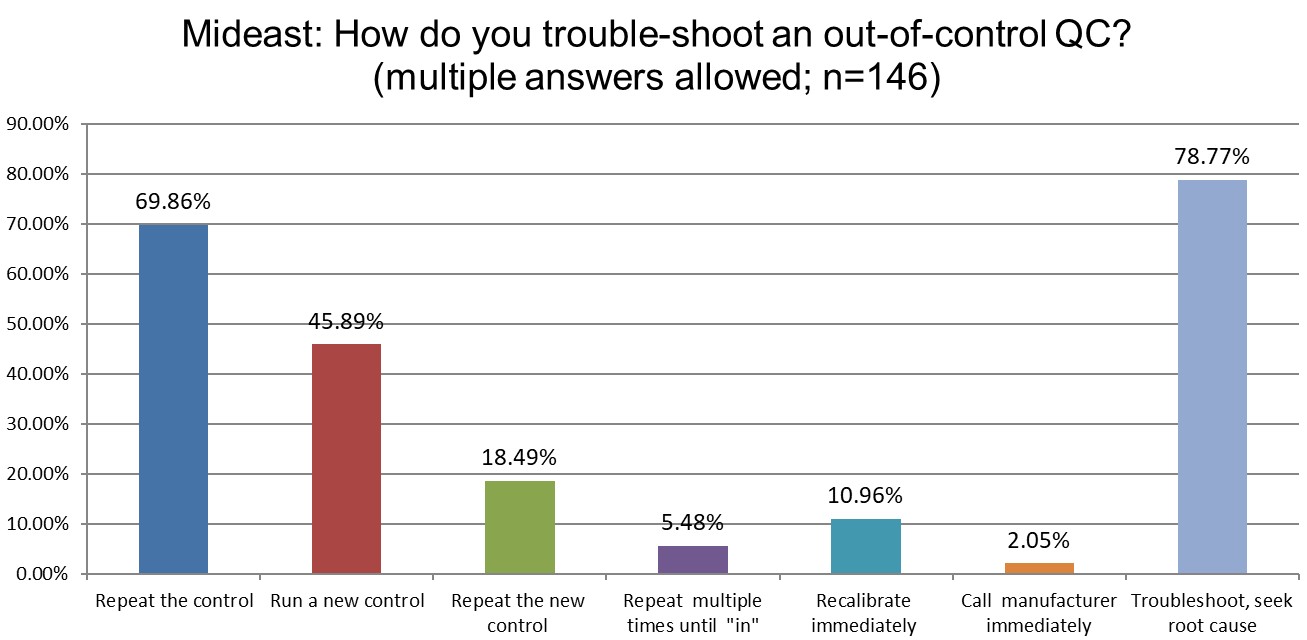
Labs in the Middle East might be slightly reducing their repeats. 71.7% of labs repeated the control once in 2021. Now that is 69.9% in 2025. Perhaps that is basically the same. Running a new control was performed by 52% of labs in 2021, now that is down to 45.9% in 2025. That's more significant. Repeating the new control was 13% in 2021, but now it's 18.5% in 2025. Repeating and repeating and repeating is basically unchanged: 4.35% in 2021, and 5.48% in 2025. The biggest change occurred in the number of labs troubleshooting before repeating was 71.7% in 2021 and is 78.8% in 2025. Again we see another region of the world troubleshooting more than in Europe.
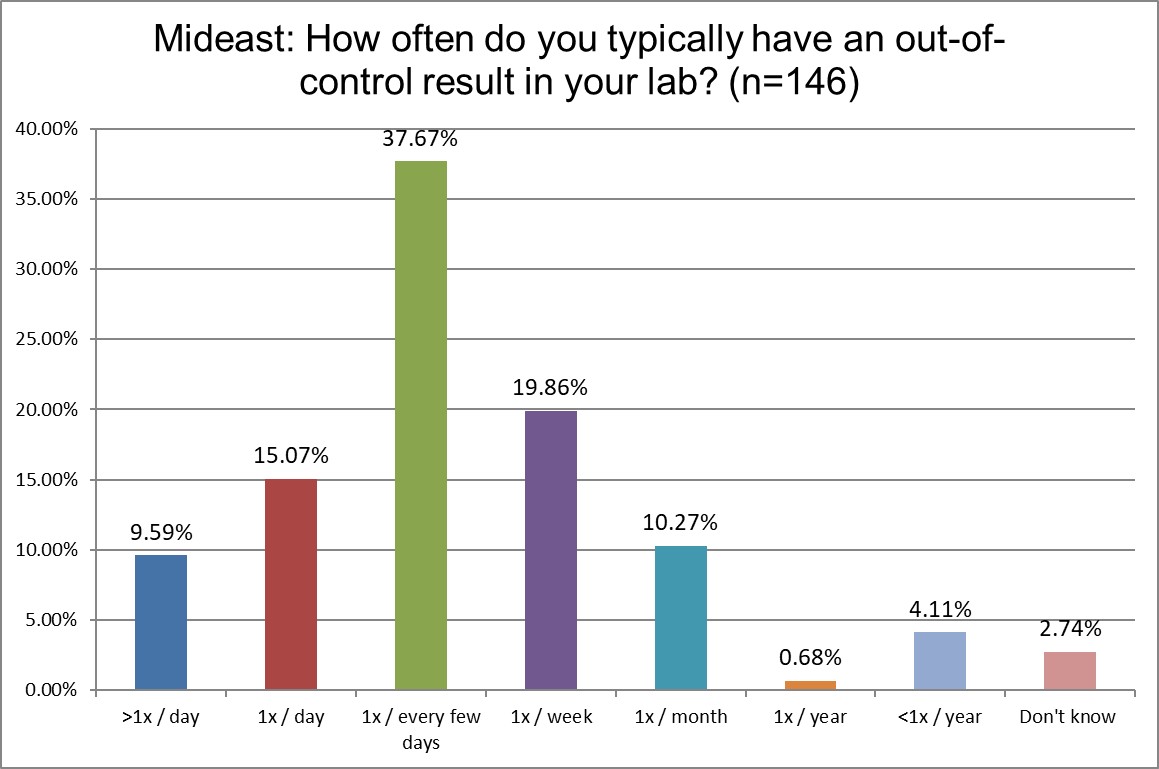
Labs in the Middle East nearly doubled the frequency of being out of control every day or multiple times per day. In 2021, 13% of labs reported being out of control every day (1x or more than 1x). In 2025, that's now more than 24%!
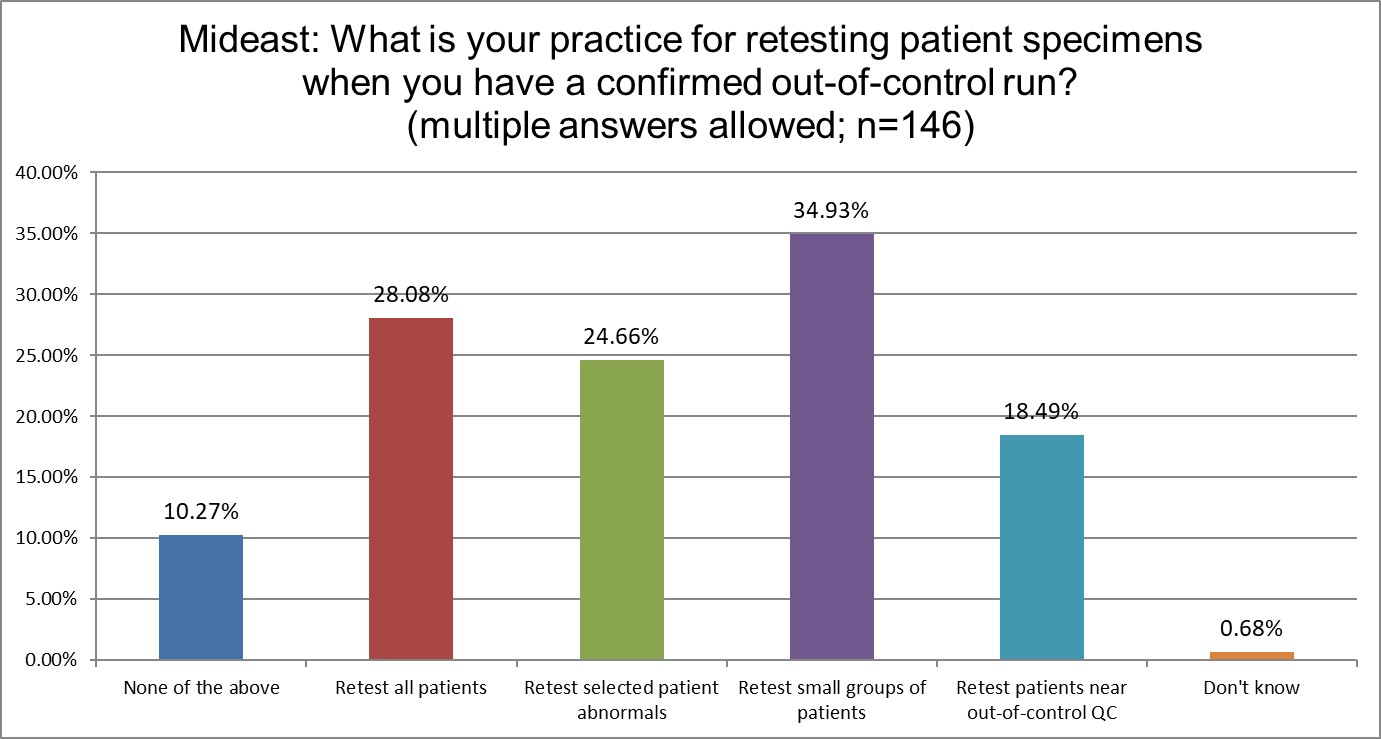
The percentage of labs in the Middle-East that retest all patients after an out-of-control episode significantly declined. It was over 45% in 2021 and now it's down to 28% in 2025. Retesting select patients increased from 15% in 2021 to almost 25% in 2025. Retesting small groups of patients sequentially rose from 28% in 2021 to almost 35% in 2025. Retesting patients close to the level that was out-of-control remains basically the same.
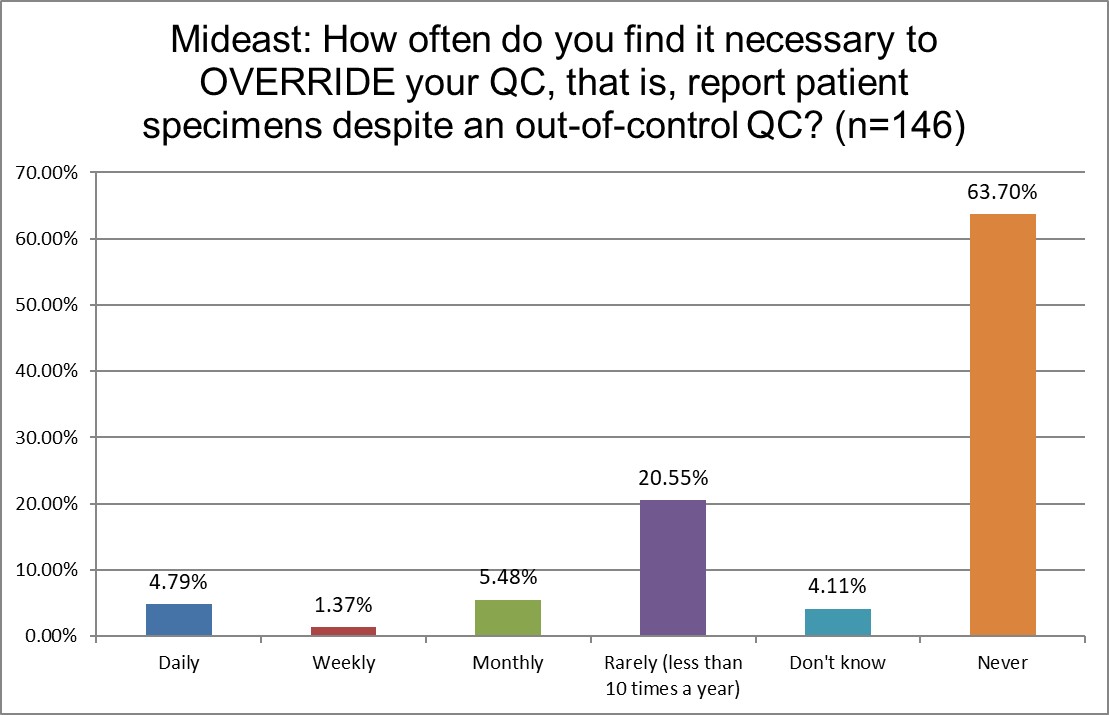
The good news is that the number of labs that send out test results even when there's an out of control run has slightly declined . In 2021, just over 8% of labs said they did this on a regular basis (daily and weekly). In 2025, that's now just over 6%. That may not represent a significant change. The number of labs that say they never override their QC rose from 58.7% in 2021 to over 63% in 2025. That increase is probably significant.
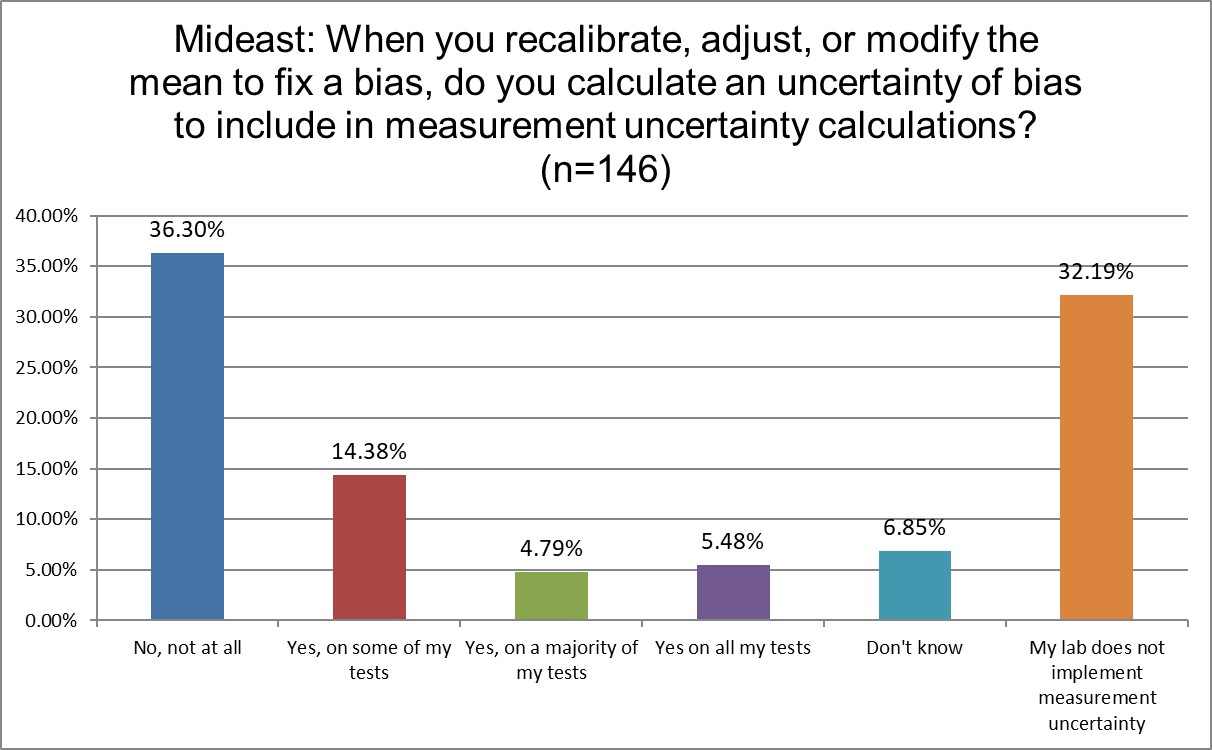
This question about bias uncertainty, or more correctly put, the measurement uncertainty around the correction of bias, is a new one to the 2025 survey. Almost a third of labs in the Middle East state they they do not calculate mu, which makes this region the 2nd highest rate of non-mu, after the US..
The Final Overview
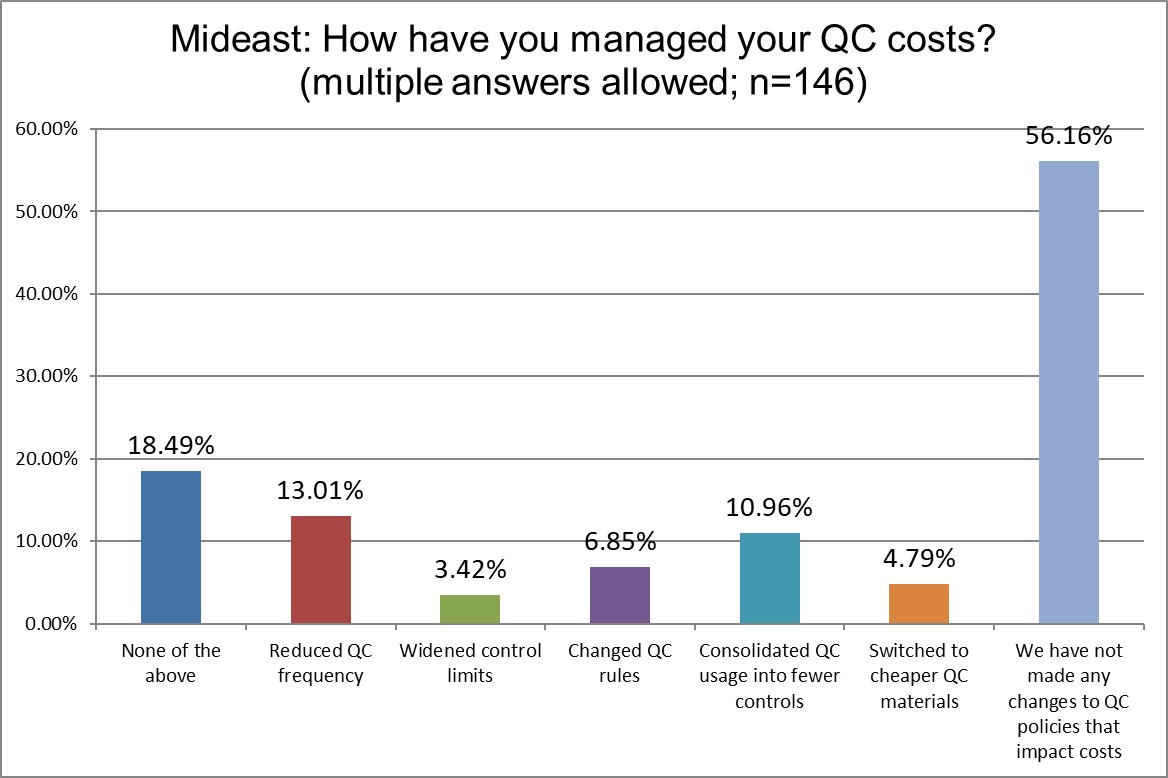
More labs have addressed their QC costs since 2021. In our previous survey, 71% of labs in the Middle East said they hadn't done anything. In 2025, it's now down to 56%, a significant decrease. The % of labs using cheaper controls, consolidated controls, or wider control limits has not significantly changed. Changing QC rules rose from 2.22% in 2021 to 6.85% in 2025. Reducing QC frequency reduced from 17.8% in 2021 down to 13% in 2025.
Nevertheless, a majority of labs in the Middle East have not managed the costs of their QC.

